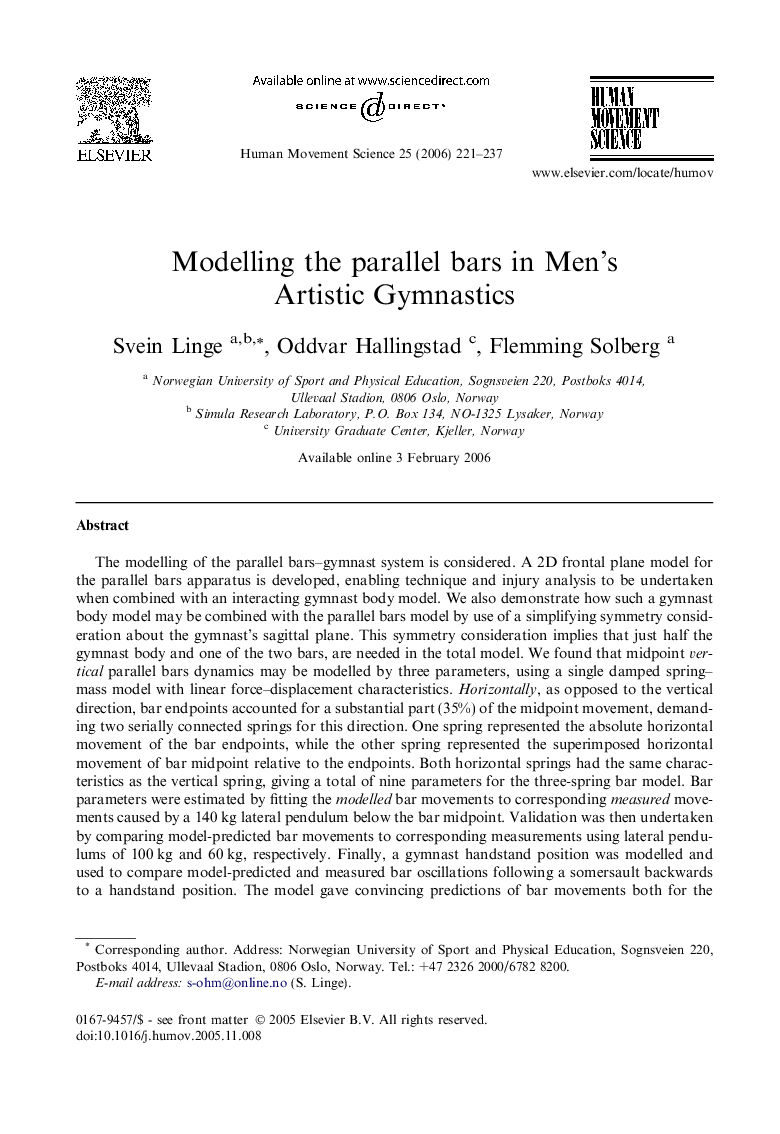| Article ID | Journal | Published Year | Pages | File Type |
|---|---|---|---|---|
| 928953 | Human Movement Science | 2006 | 17 Pages |
The modelling of the parallel bars–gymnast system is considered. A 2D frontal plane model for the parallel bars apparatus is developed, enabling technique and injury analysis to be undertaken when combined with an interacting gymnast body model. We also demonstrate how such a gymnast body model may be combined with the parallel bars model by use of a simplifying symmetry consideration about the gymnast’s sagittal plane. This symmetry consideration implies that just half the gymnast body and one of the two bars, are needed in the total model. We found that midpoint vertical parallel bars dynamics may be modelled by three parameters, using a single damped spring–mass model with linear force–displacement characteristics. Horizontally, as opposed to the vertical direction, bar endpoints accounted for a substantial part (35%) of the midpoint movement, demanding two serially connected springs for this direction. One spring represented the absolute horizontal movement of the bar endpoints, while the other spring represented the superimposed horizontal movement of bar midpoint relative to the endpoints. Both horizontal springs had the same characteristics as the vertical spring, giving a total of nine parameters for the three-spring bar model. Bar parameters were estimated by fitting the modelled bar movements to corresponding measured movements caused by a 140 kg lateral pendulum below the bar midpoint. Validation was then undertaken by comparing model-predicted bar movements to corresponding measurements using lateral pendulums of 100 kg and 60 kg, respectively. Finally, a gymnast handstand position was modelled and used to compare model-predicted and measured bar oscillations following a somersault backwards to a handstand position. The model gave convincing predictions of bar movements both for the 100 kg (1 period, RMS error of 7.0 mm) and 60 kg (1 period, RMS error of 3.7 mm) pendulums, as well as for the somersault landing (2 periods, RMS error of 8.1 mm).
